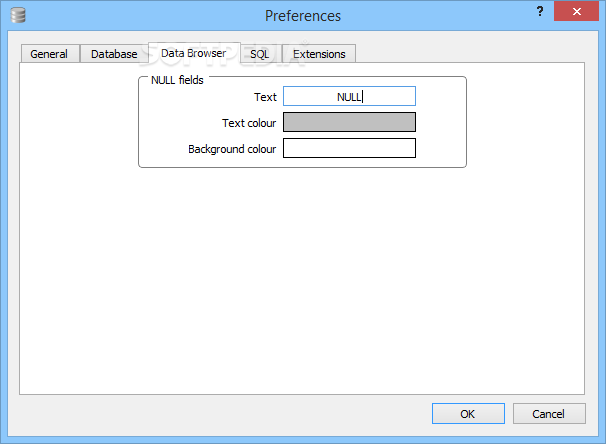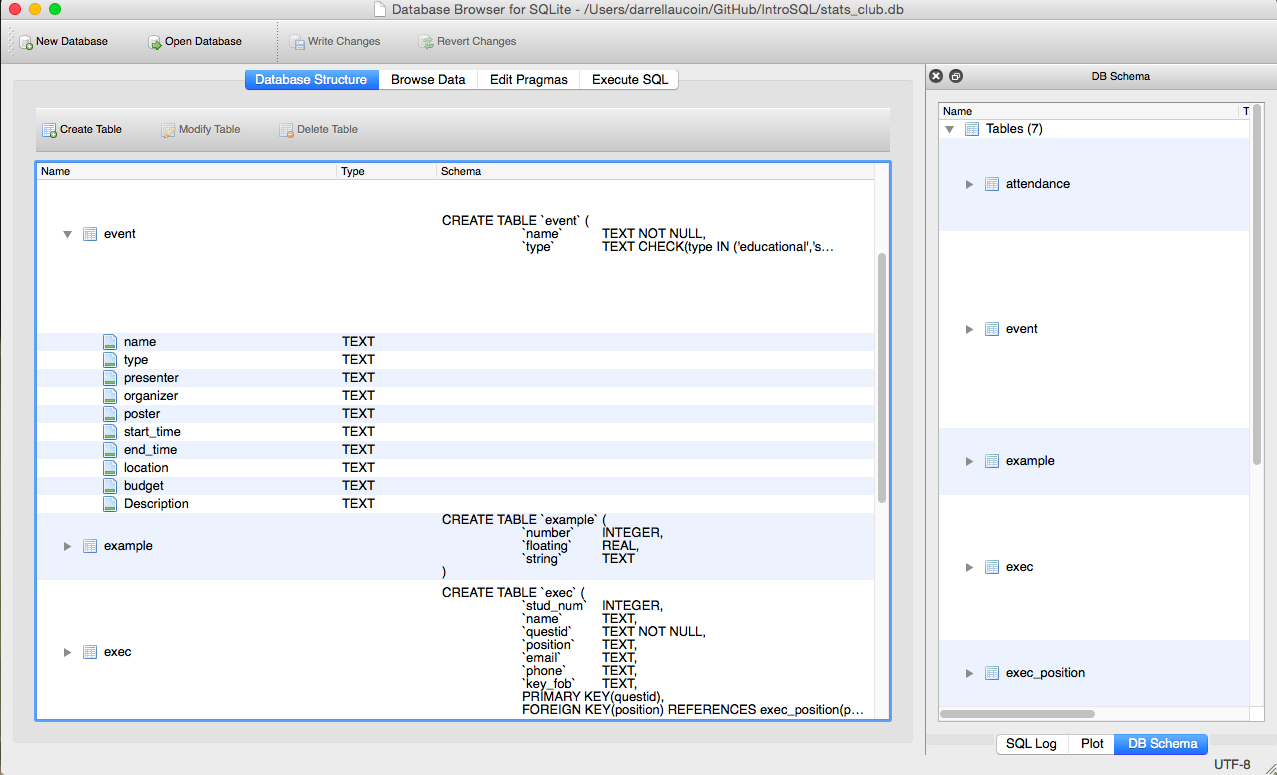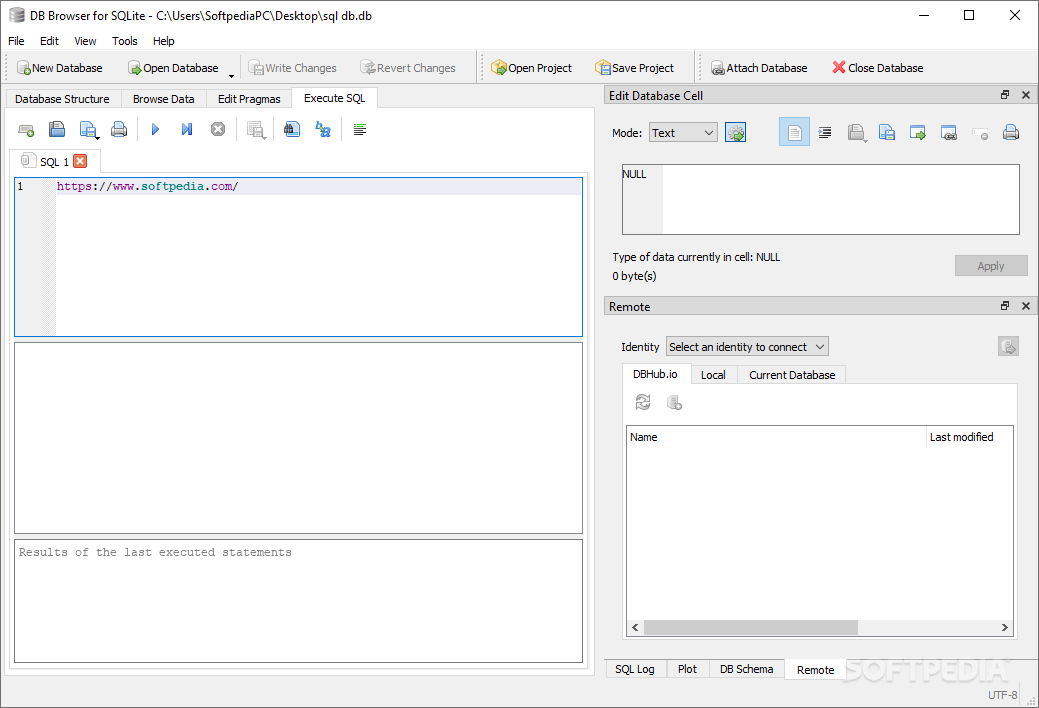

- #Db browser for sqlite portable how to
- #Db browser for sqlite portable install
- #Db browser for sqlite portable plus
#Db browser for sqlite portable install
Update automatically or install from the portable app store in the Platform. And it's open source and completely free. It's packaged in Format so it can easily integrate with the Platform. This app is packaged in conjunction with the publisher. You can download command line utility sqlite3 hereĪfter that you can explore this database-file.txt file with Notepad++. DB Browser for SQLite Portable is a visual tool used to create, design and edit database files compatible with SQLite. Run cmd (command line console) then navigate to the folder (with cd command) with database file and issue following command (replace database-file.db with actual file) sqlite3 database-file.db. If you want to see content of database as a text you need to export it as SQL dump file: SQLite database is in binary form, you can't access it directly with text editor. The explanation is beyond me at the moment. DB format, the new file contains it (again, when viewed as text). DB file contains it (when viewed as text) and the exported SQL does not contain it when however it is reimported back to the. Specific: finding "SCROLL in this file - failedīy following the aforementioned methods, I was unable to find the string "SCROLL in the file provided by the OP. Nearly every database manager tool has an export (or dump) and import function that will do exactly that. Alternatively, we could carefully edit the exported database and then reimport it to the original. This could reveal all occurrences of a certain string and will let us know which tables and columns are relevant so that we can go back and work on them with the manager tool of our choice.
#Db browser for sqlite portable how to
Database manager software, both graphical and command-line, will usually follow this pattern.īut what if you don't know in advance where the string you are looking for could be? How to look for a specific sequence anywhere in the whole database? The easiest way is to transform the database into a flat text file and search within it. This means that you have to know beforehand which table contains the data you are looking for, select it and then run the query against one of its columns. Simple searches in databases are done on a column in a table. If you made any changes, you can save them back to the original file and you are done. With either of these programs, you can connect to (or open) a SQLite file and then browse, search and edit its contents. If you are using Firefox, I would recommend the SQLite Manager Add-on, otherwise there is the excellent standalone DB Browser for SQLite, which is available for Windows, Mac and Linux and even as a Portable App. Sqlite databases are not plaintext files, and need to be handled with specific software.

I can either use the icon in the upper left-hand corner, or I can go under the File menu and select New Database.I'm expanding my comments to an answer, the main point being that while I agree with Alex on everything he writes, I recognize that a Windows user might be better off using graphical tools. Once you've installed DB Browser for SQLite, importing a dataset is incredibly easy.

There are installable versions for Macintosh, for Windows, for Portable Applications, and for Linux. DB Browser is an open-source SQLite browser, written in C++ and available on GitHub.
#Db browser for sqlite portable plus
In the next video, I'll show how to import the CSV file, plus select the field formats. This may be acceptable for your needs so I'm going to show how it works.

This worked better than using a web browser but I was still unable to select the format of the fields before import. My next attempt is to use DB Browser for SQLite, with the SQLite library.


 0 kommentar(er)
0 kommentar(er)
